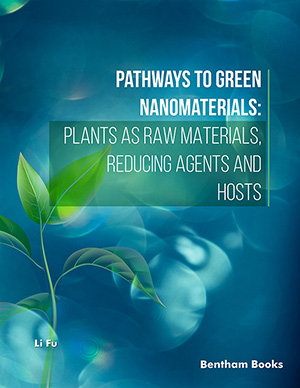Abstract
In the present work Repaglinide loaded ammonio methacrylate copolymer nanoparticles were developed by modified solvent emulsion technique using high pressure homogenizer. An effect of numerous organic solvents, surfactant concentration, drug-polymer ratios and combination of polymers on encapsulation efficiency as well as drug release profile were studied. Sustained released nanoparticles were obtained in the size of less than 400 nm. FE-SEM showed smooth and rigid surface of Eudragit RS nanoparticle’s while porous surface nature was observed in Eudragit RL nanoparticles. No drug-polymer interaction was found. X-RD revealed that the crystallinity of repaglinide was decreased when processed with Eudragit polymers. Eudragit RSPO retained drug for more time than other copolymers. Most of the formulations followed zero order kinetics. Prepared nanoparticles can be used for the treatment of type 2 diabetes mellitus by minimizing dose rate, reducing adverse effects and enhancing patient fulfillment.
Keywords: Drug release study, eudragit RL, eudragit RS, modified emulsification, stability study.
Micro and Nanosystems
Title:Effect of Solvents, Drug/Polymer Ratio and Surfactant Concentration on In Vitro Characteristic of Repaglinide Loaded Poly (Meth) Acrylate Nanoparticles
Volume: 6 Issue: 4
Author(s): A. Lokhande, S. Mishra, R. Kulkarni and J. Naik
Affiliation:
Keywords: Drug release study, eudragit RL, eudragit RS, modified emulsification, stability study.
Abstract: In the present work Repaglinide loaded ammonio methacrylate copolymer nanoparticles were developed by modified solvent emulsion technique using high pressure homogenizer. An effect of numerous organic solvents, surfactant concentration, drug-polymer ratios and combination of polymers on encapsulation efficiency as well as drug release profile were studied. Sustained released nanoparticles were obtained in the size of less than 400 nm. FE-SEM showed smooth and rigid surface of Eudragit RS nanoparticle’s while porous surface nature was observed in Eudragit RL nanoparticles. No drug-polymer interaction was found. X-RD revealed that the crystallinity of repaglinide was decreased when processed with Eudragit polymers. Eudragit RSPO retained drug for more time than other copolymers. Most of the formulations followed zero order kinetics. Prepared nanoparticles can be used for the treatment of type 2 diabetes mellitus by minimizing dose rate, reducing adverse effects and enhancing patient fulfillment.
Export Options
About this article
Cite this article as:
Lokhande A., Mishra S., Kulkarni R. and Naik J., Effect of Solvents, Drug/Polymer Ratio and Surfactant Concentration on In Vitro Characteristic of Repaglinide Loaded Poly (Meth) Acrylate Nanoparticles, Micro and Nanosystems 2014; 6 (4) . https://dx.doi.org/10.2174/187640290604150302125610
| DOI https://dx.doi.org/10.2174/187640290604150302125610 |
Print ISSN 1876-4029 |
| Publisher Name Bentham Science Publisher |
Online ISSN 1876-4037 |
Call for Papers in Thematic Issues
Recent Advances in Modeling, Optimization, Characterization and Simulation of Advanced Mechanical Micro/Nano Processes
This Special Issue primarily focuses on enabling technologies that facilitate optimization, designing, Characterization, machining, and manufacturing approaches for micro/nano systems used in different domains: electrical, mechanical, thermal, magnetic, optic, fluidic. This paper collection organizes and disseminates recent research, theories, and practices relevant to areas of micro-system designing, machining, and manufacturing ...read more
Related Journals
 24
24
- Author Guidelines
- Graphical Abstracts
- Fabricating and Stating False Information
- Research Misconduct
- Post Publication Discussions and Corrections
- Publishing Ethics and Rectitude
- Increase Visibility of Your Article
- Archiving Policies
- Peer Review Workflow
- Order Your Article Before Print
- Promote Your Article
- Manuscript Transfer Facility
- Editorial Policies
- Allegations from Whistleblowers
Related Articles
-
Hydroxysteroid Dehydrogenase (17β -HSD3, 17β-HSD5, and 3α-HSD3) Inhibitors:Extragonadal Regulation of Intracellular Sex Steroid Hormone Levels
Recent Patents on Endocrine, Metabolic & Immune Drug Discovery Obesity-Induced Cerebral Hypoperfusion Derived from Endothelial Dysfunction: One of the Risk Factors for Alzheimer's Disease
Current Alzheimer Research In Silico Study of Flavonoids as DPP-4 and α-glucosidase Inhibitors
Letters in Drug Design & Discovery Recent Developments in Nanomedicines for Management of Various Health Issues Via Metabolism and Physico-Chemical Properties
Current Drug Metabolism Beta-Blockers as First Line Treatment of Hypertension: A Proponents View
Current Hypertension Reviews Pediatric Immune Dysfunction and Health Risks Following Early-Life Immune Insult
Current Pediatric Reviews Pseudomonas aeruginosa -Eukaryotic Cell Crosstalk: Mediators, Mechanisms and Implications for the Antimicrobial Therapy
Current Organic Chemistry The Role of H. pylori Infection in Diabetes
Current Diabetes Reviews New Insight into Diabetes Management: From Glycemic Index to Dietary Insulin Index
Current Diabetes Reviews Indicators of Cardiovascular Risk in Metabolic Syndrome: Long Term Follow-up in Italian Patients
Current Vascular Pharmacology Cardiovascular Benefit of SGLT2 Inhibitors in the Therapeutics of Diabetes Mellitus: A Close Look beyond the Horizon
Current Drug Targets Characterization of Optimized Functional-Complementary Dual Insulinotorpic Peptide rolGG
Current Pharmaceutical Biotechnology Is Later Obesity Programmed In Utero?
Current Drug Targets Lipid Rafts and Redox Regulation of Cellular Signaling in Cholesterol Induced Atherosclerosis
Current Cardiology Reviews Plasmid DNA Gene Therapy by Electroporation: Principles and Recent Advances
Current Gene Therapy Soluble Forms of RAGE in Human Diseases: Clinical and Therapeutical Implications
Current Medicinal Chemistry Crocin Protects Human Umbilical Vein Endothelial Cells from High Glucose-Induced Injury Via Inhibiting the Endoplasmic Reticulum Stress Response
Current Molecular Medicine Opportunities for Pharmacotherapy at the Intersection of Metabolic Syndrome and Hemostasis
Current Pharmaceutical Biotechnology HPLC Stability Indicating Assay Method for Metformin Hydrochloride in Bulk Drug and Tablets and Cytotoxicity of Degradation Products
Current Pharmaceutical Analysis Synthesis and Biological Activity of Nitric Oxide-releasing Derivatives of Ferulic Acid as Potential Agents for the Treatment of Chronic Kidney Diseases
Medicinal Chemistry






















